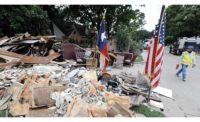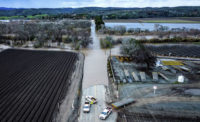The nearby city of Vallejo provided an initial damage estimate "in excess of $5 million," primarily due to damage sustained by unreinforced masonry buildings. Some of Napa Valley’s famed wineries suffered damage to valuable bottles and casks, though no major structural damage to facilities was reported.
The community of American Canyon, just four miles from the epicenter, reported no significant structural or infrastructure damage. Likewise, the Bay Area was not seriously impacted.
John Parrish, state geologist and chief of the California Geological Survey, said that as of 3:30 p.m. Sunday, around 60 aftershocks had occurred, the largest a magnitude 3.6. The aftershocks could continue for several weeks, but he says the probability of any major ones is rapidly diminishing.
Even though Sunday’s earthquake was large, Parrish says the area’s geology of soft muds dampened surface waves. The lack of ground motion meant less structural shaking, which was confined to a relatively small damage area. The quake occurred at a depth of approximately 7 miles.
Reports that the ShakeAlert system being tested at UC Berkeley detected the quake 10 seconds before it occurred renewed calls for a statewide alert system. Ghilarducci says the state is “working diligently to create an early detection system throughout the state” with the ultimate goal being to provide advanced warning of between 15 seconds and 90 seconds prior to the quake. Even a brief notification could allow automated valves to shut off gas lines to prevent fires and inform medical staff to stop delicate procedures, experts say.
Late Sunday, an unrelated magnitude 3.3 earthquake occurred between Long Beach and Catalina Island in Southern California. No damage was reported.




Post a comment to this article
Report Abusive Comment